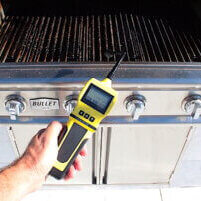
sewer gas tester s are requisite devices that play a pivotal role in safeguarding workers and the environment from the dangers posed by unsafe gases. In various industries, including oil and gas, mining, manufacturing, and chemical processing, the risk of to deadly or flammable gases is substantial. These gases, such as carbon paper monoxide, hydrogen sulphide, methane, and various fickle organic fertiliser compounds, can lead to serious wellness issues or even fatalities if not sensed right away. Therefore, the carrying out of gas monitoring systems is not only a count of regulative compliance but also a first harmonic scene of activity health and safety. By providing real-time data on gas concentrations, gas monitors companies to take immediate action to mitigate risks and protect their employees.
The technology behind gas monitors has evolved importantly over the eld, with a variety of sensors available to observe specific gases. Common types of sensors include chemical science, infrared radiation, and chemical action bead sensors. Electrochemical sensors are widely used for detective work noxious gases due to their sensitiveness and specificity. They work by producing a modest electric automobile stream in response to the front of a gas, allowing for right signal detection at low concentrations. Infrared sensors, on the other hand, quantify gas concentrations by detective work the absorption of infrared dismount, qualification them paragon for monitoring combustible gases. Catalytic bead sensors are often exploited in atmospheres, where sleuthing inflammable gases is material. This diversity in perception engineering science ensures that gas monitors can be trim to meet the unique needs of different heavy-duty applications.
The grandness of gas monitors extends beyond immediate safety; they are also vital for ensuring compliance with activity refuge regulations. Regulatory agencies such as the Occupational Safety and Health Administration(OSHA) set demanding standards for work safety, requiring the use of gas signal detection systems in environments where risky gases may be submit. Failure to follow with these regulations can lead in considerable penalties and, more importantly, jeopardize refuge. Therefore, organizations that prioritize the implementation of gas monitors not only protect their hands but also enhance their repute and work unity.
In plus to subroutine monitoring, gas monitors are priceless during response situations. First responders, including firefighters and dangerous materials teams, rely on portable gas detectors to tax the refuge of environments before incoming. These provide real-time selective information about gas levels, enabling responders to make hip decisions about necessary precautions and actions. The quick signal detection of unsafe gases can significantly tighten risks and enhance safety during emergency trading operations, possibly deliverance lives and preventing further harm.
Technological advancements have also led to the development of Bodoni gas monitors that sport radio receiver connectivity and remote monitoring capabilities. These innovations allow safety managers to get across gas levels from a outdistance, facilitating active management of potency hazards. Many contemporary gas monitors come equipped with alarms and apprisal systems that alarm users immediately when gas concentrations transcend safe thresholds, ensuring well-timed responses to potential dangers.
Regular sustentation and standardization of gas monitors are crucial for their effective operation. Organizations must set up demanding maintenance schedules to control their gas detection clay functional and correct. Neglecting function sustentation can lead to false readings or failures, flared the risk of gas exposure for workers. Additionally, grooming employees on the specific use and maintenance of gas signal detection is life-sustaining to maximizing their strength and ensuring that personnel department are equipt to respond appropriately to alarms.
In termination, gas monitors are obligatory tools in industrial settings, providing essential protection for workers and the against hazardous gases. Their ability to real-time monitoring and signal detection is requisite for maintaining safety and submission with regulations. As applied science continues to advance, gas monitors will become even more sophisticated, enhancing refuge measures across various industries. By investment in reliable gas signal detection systems and committing to regular upkee and employee preparation, organizations can create safer work environments that prioritize the health and well-being of their workforce.
